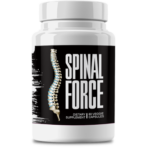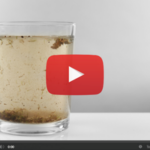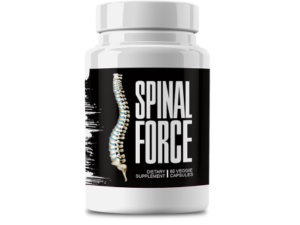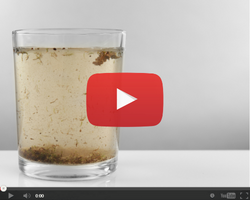This Village-Made Chinese Pain Reliever Eliminates Back And Joint Pain!
Diet and Lifestyle Changes That Help Alleviate Arthritis in Toes

How Diet and Lifestyle Tweaks Can Ease Arthritis in Your Toes
Getting Started: What You Need to Know About Toe Arthritis
If you've been wrestling with annoying pain, stiffness, or sudden flares in your toes, you’re not alone. Toe arthritis is pretty common, even if it doesn’t get much airtime in everyday conversation. The good news is that understanding what’s going on is the first step towards feeling better. Many folks have discovered that adopting a few smart dietary and lifestyle changes can naturally ease their symptoms and boost overall well-being. In the paragraphs that follow, we’ll break down what toe arthritis is all about, how it shows up, and a holistic way to tackle it. Our mission? To arm you with practical tips that blend solid science with everyday wisdom.
So, What Exactly is Toe Arthritis?
When we talk about “arthritis in the toes,” we’re referring to inflammation in the joints of your toes. It’s most often tied to wear-and-tear conditions like osteoarthritis, though sometimes autoimmune issues like rheumatoid arthritis play a part. What many people miss is that your toe joints, which bear more weight than you might think, are more complex than they seem. Even a little bit of inflammation can lead to significant discomfort and mobility headaches. That’s why early detection and proactive measures aren’t just nice-to-haves—they’re essential if you want to keep living life to its fullest.
Spotting the Signs and Getting a Diagnosis
You might notice pain, stiffness, swelling, or even some redness in the toes. These symptoms can flare up after you've been on your feet for too long or following a spell of inactivity. Doctors usually piece together your medical history, undertake a thorough physical exam, and may even get some X-rays or MRIs to confirm what’s going on. Early on, symptoms might be pretty subtle, but as things progress, they can really throw a wrench in your day-to-day routine. That’s why routine checkups and being in the know about your symptoms are crucial—they help keep your joints humming along smoothly.
The Impact on Daily Life
Dealing with toe arthritis can turn simple tasks like walking or standing for a while into a real challenge. The discomfort might force you to cut back on activity, which could inadvertently affect your balance and overall mobility. And it doesn’t stop there—the pain might even mess with your sleep, mood, and mental health. Recognizing how arthritis affects you both physically and emotionally is key when you’re planning lifestyle changes. It’s not just about managing the pain; it’s about getting life back on track and feeling like yourself again.
Smart Eating: Dietary Tips for Toe Arthritis Relief
Your plate can be a powerful tool in the fight against toe arthritis. Carefully chosen foods can help dial down inflammation and support healthy joints. A diet focused on anti-inflammatory goodies—think fresh, whole foods as opposed to processed junk—can be particularly effective. As you tweak your meals, remember that balance and moderation are your best friends. Up next, we’ll dive into which nutrients pack the most punch, foods you might want to steer clear of, and even some sample meal ideas to help you feel better from the inside out.
Why an Anti-Inflammatory Diet Works Wonders
An anti-inflammatory diet is all about loading up on foods that help keep inflammation under control, a major culprit behind joint pain in toe arthritis. Imagine a diet rich in healthy fats, lean proteins, and plenty of fiber from fruits and veggies. Over time, this way of eating works its magic by easing inflammation, which in turn can lessen pain and boost joint function. Whole grains and omega-3 powerhouses like flaxseeds, walnuts, and fatty fish also join the team. By making these swaps, you’re not just fighting pain—you’re investing in a healthier future for your joints and overall mobility.
Nutrients to Embrace—and Those to Dodge
Certain nutrients can be real game-changers for your joint health. Omega-3 fatty acids, antioxidants, and vitamins such as C and D are fantastic for combating inflammation. Foods like salmon, chia seeds, and walnuts are brimming with omega-3s, while a burst of color on your plate from berries, leafy greens, and citrus fruits delivers a hefty dose of antioxidants. On the flip side, it might be wise to cut back on processed sugars, saturated fats, and refined carbs, as these are known to ramp up inflammation. The secret? Enjoy everything in moderation so you’re fueling your body right without overindulgence.
Meal Ideas to Soothe Toe Arthritis
Crafting a meal plan that’s both tasty and kind to your toes is easier than you might think. Picture this: a breakfast smoothie packed with spinach, blueberries, and a sprinkle of flaxseeds to kick off your day with a nutritional punch. For lunch, how about a colorful salad with mixed greens, cherry tomatoes, grilled salmon, topped with walnuts, and drizzled with a bit of olive oil and lemon juice? Dinner could be a serving of lean chicken or tofu with quinoa or brown rice and a side of steamed broccoli. And don’t forget snacks—a few sliced apples with almond butter or a handful of mixed nuts can keep your energy steady and inflammation in check. These meals not only nourish your body but also help keep toe arthritis symptoms under control.
Fighting Inflammation: Foods That Pack a Punch
One of the most natural ways to ease the pain of toe arthritis is by loading up on anti-inflammatory foods. Rich in antioxidants, healthy fats, and essential minerals, these foods empower your body to fight inflammation and reduce joint pain. In this section, we’re shining a light on three groups: omega-3-rich foods, vibrant fruits and veggies loaded with antioxidants, and time-tested herbs and spices known for their soothing properties. By mixing these into your daily diet, you can create an internal environment that works against chronic inflammation, making those everyday activities a bit more comfortable.
The Benefits of Omega-3-Rich Foods
Omega-3 fatty acids are like little warriors against inflammation. Found abundantly in fatty fish—think salmon, mackerel, and sardines—as well as in plant-based options like chia seeds, flaxseeds, and walnuts, these fats help calm down joint inflammation and support heart health as a bonus. Even swapping out red meat for salmon now and then can lead to noticeable improvements. By prioritizing foods high in omega-3s, you’re taking a significant step toward lessening inflammation and easing that nagging toe pain.
Get Colorful with Antioxidant-Rich Fruits and Veggies
When it comes to reducing inflammation, antioxidants are your best buddies. Bright, colorful fruits and vegetables like blueberries, strawberries, spinach, and kale are bursting with vitamins C and E and other powerhouse compounds that neutralize harmful free radicals. Eating a variety of these helps bolster your immune system and supports healthier joints. Embracing seasonal produce and mixing it up on your plate can really pay off in the long run, offering both delicious flavor and tangible relief from arthritis-related discomfort.
Herbs and Spices: Nature’s Little Helpers
Herbs and spices such as turmeric, ginger, garlic, and cinnamon have been celebrated for generations for their anti-inflammatory prowess. Turmeric, with its active ingredient curcumin, has particularly grabbed attention for its ability to ease joint pain. Ginger not only helps settle your stomach but also plays a part in reducing inflammation. Adding a dash of these natural flavor enhancers to your cooking isn’t just about boosting taste—it’s about bolstering your body’s defenses against inflammation. A daily cup of ginger tea or a smoothie spiked with turmeric can be simple yet incredibly effective ways to tame toe arthritis discomfort.
Keep Moving: Exercises and Mobility Tips for Toe Arthritis
While your diet definitely plays a starring role, don’t forget that a bit of movement goes a long way. Regular, gentle exercise can help keep your joints flexible, strengthen the muscles around them, and ease that frustrating stiffness. The trick is to stick to low-impact activities that won’t put too much strain on your toes. Whether you’re into yoga, swimming, or just a casual walk, finding your groove is key. Combining strength training with flexibility exercises ensures you’re covering all your bases. Listen to your body, build your routine gradually, and soon you’ll notice your pain decreasing and mobility improving, one step at a time.
Low-Impact Workouts to Soothe Your Joints
For many dealing with toe arthritis, low-impact workouts can be a real lifesaver. Activities like swimming, stationary cycling, or even water aerobics let you get a great cardio session without stressing your toe joints. And don’t underestimate gentle yoga or tai chi—these practices can work wonders in boosting your balance and flexibility, often helping to ward off flare-ups. When you start something new, remember to listen to your body and modify as needed to keep discomfort at bay. Over time, these exercises can strengthen the support structures in your body, leading to less joint pain and smoother daily functioning.
Stretching Routines to Improve Flexibility
A little stretching goes a long way when managing toe arthritis. Simple routines like gentle toe and calf stretches or rotations of your feet can keep joint stiffness in check and promote better blood flow. Even a few minutes here and there throughout your day can stave off that rigid feeling, while also enhancing overall balance and mobility. Take it easy and tailor your stretching to what feels right—you’ll soon notice these regular moves leading to less pain and a more active, fluid daily routine.
Weaving Movement into Everyday Life
Incorporating more movement into your day doesn’t have to be a major overhaul. Even small changes, like taking short walks or pausing to stretch during long periods of sitting, can make a big difference. Try setting reminders to stand up or go for a brief stroll, especially if you’re tied to a desk at work. These little bursts of activity help keep your joints lubricated and prevent stiffness from setting in. Over time, these simple changes can really add up, making your days more comfortable and active despite toe arthritis.
Keeping an Eye on the Scale: Weight Management Tips
When you’re dealing with toe arthritis, managing your weight can make a world of difference. Extra pounds put additional pressure on your toe joints, which can ramp up pain and swelling. By focusing on gradual, sustainable changes in both diet and exercise, you can take some of that pressure off and improve not only your joint health but overall energy and cardiovascular well-being. Think of it as a team effort where every healthy choice contributes to a greater sense of comfort and mobility.
How Weight Plays a Role in Toe Arthritis
It might seem obvious, but every extra pound adds strain to your toe joints, which are already prone to inflammation. This extra stress can speed up the wear and tear on your joints and ramp up discomfort. Understanding just how much your weight can affect toe arthritis is the first step in making effective changes. Even modest weight loss achieved through a balanced diet and exercise can significantly ease the discomfort and improve your mobility. It's all about finding that sweet spot where your joints can function with less burden and more comfort.
Sustainable Weight Loss Strategies
When it comes to shedding pounds with toe arthritis, slow and steady wins the race. Focus on incremental changes like meal planning based on anti-inflammatory principles, watching your portions, and integrating regular, low-impact exercises. Remember to include ways to manage stress and improve your sleep too—they all play a part in a balanced approach to weight loss. Little changes, like swapping out sugary snacks for nutrient-packed alternatives, can add up over time. Keeping expectations realistic and appreciating each small victory can pave the way for lasting improvements in joint comfort and overall well-being.
Tracking Your Progress and Tweaking Your Diet
Monitoring how you’re doing along the way is key. Keeping a food journal, setting achievable goals, and checking in with your doctor can help you fine-tune your approach. As your body adapts to healthier eating and regular movement, you might need to adjust portion sizes or try new anti-inflammatory foods. This flexible, patient approach lets you stay on top of how your body is responding, ensuring your diet and lifestyle continuously support better joint health and mobility over time.
Supplements and Natural Remedies: Extra Help for Your Joints
Sometimes, in addition to tweaking your diet and routine, targeted supplements and natural remedies can give your joints an extra boost. While a whole-food diet forms the backbone of your nutrition, certain supplements like fish oil, glucosamine, or turmeric extracts may offer added benefits by reducing inflammation and cushioning joint pain. Just keep in mind that these should be used under the guidance of your healthcare provider. The tips below are designed to give you a range of options that can work together with your overall strategy in managing toe arthritis.
Key Supplements for Joint Health
Research has shown that specific supplements can play a supportive role in keeping your joints in better shape. Omega-3 fatty acids from fish oil, along with glucosamine and chondroitin, are often recommended to help safeguard cartilage. Add curcumin from turmeric and antioxidants like vitamins C and E into the mix, and you’ve got a robust formula aimed at curbing inflammation. Make sure to choose high-quality brands and check in with your doctor before starting anything new. Paired with a balanced diet, these supplements can round out a comprehensive approach to easing toe arthritis pain.
Natural Remedies and Home Treatments
If you’re looking for some extra relief, natural remedies might be just the ticket. Warm foot soaks, capsaicin creams, and massages using essential oils like eucalyptus or lavender can offer temporary relief from that achy stiffness. Sometimes, a simple cold or warm compress applied at just the right moment also does wonders. While these home treatments aren’t a substitute for professional care, they can be a comforting complement to your regular management plan, helping you navigate the ups and downs of toe arthritis.
When to Reach Out to a Professional
If you find that despite your best efforts, the pain and discomfort keep hanging around or even getting worse, it’s definitely time to talk to a healthcare professional. Persistent or worsening symptoms could signal that your treatment plan needs a tweak or more targeted intervention. A specialist can give you a full rundown on what’s happening, suggest medications or specific therapies, and help craft a management plan tailored just for you. Getting professional guidance early on is always a smart move when it comes to keeping your joints as healthy as possible.
Everyday Lifestyle Changes for a Better Life with Toe Arthritis
It’s not just what you eat or how you exercise—small lifestyle tweaks can really transform your day-to-day experience with toe arthritis. Beyond your meals and workouts, managing stress, getting enough sleep, and even choosing the right footwear can make a significant difference. By making thoughtful adjustments across various aspects of your life, you can keep your symptoms in check and enjoy a fuller, more active lifestyle. Remember, it’s the little choices that add up to long-term well-being.








